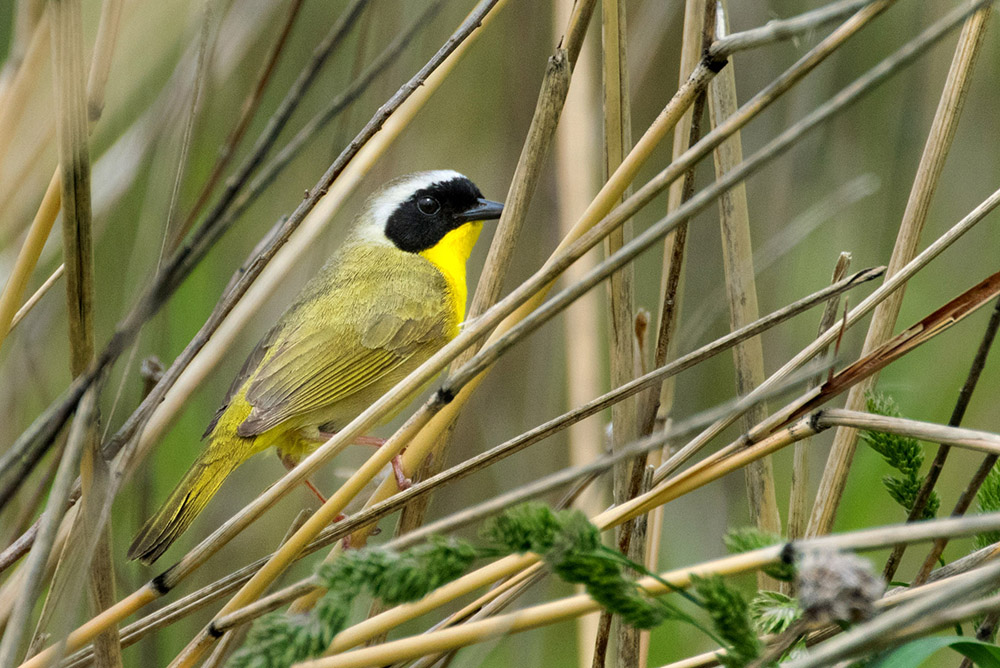
Common Yellowthroat Warbler at Wildlife Prairie Park. (PHOTO BY DENNIS ENDICOTT, Peoria Audubon Society)

MIKE MILLER
Today, outside of the visitor center at Tawny Oaks a loud racket sprung from the nearby brush. A bird began singing a loud song and had seemingly forgotten the words — repeating things while attempting to remember the melody. Not having any luck with that, he just decided to sing his stuttering chatter louder. Meet the Yellow Breasted Chat, a raucous warbler of brushy open areas. This is a savanna specialist and nests in patches of blackberry and hazelnut. They are large for a warbler, a little larger than the House Sparrow, but smaller than a Robin. They have a long tail, and striking yellow breast. If the male is around during June, you can’t help but hear its loud, raucous song. They over-winter in Central America and migrate back to the Unites States where they nest in open, brushy habitats from coast to coast. More info on this bird can be found at https://www.allaboutbirds.org/guide/Yellow-breasted_Chat/overview.
Out in the brushy pastures, prairies and wetland edges, another warbler sings a repetitive three-note song –– “wichety-wichety-wichety.” It is loud enough that you can hear it 100-yards away. It will likely be sitting in a lone shrub amongst the grasses and prairie plants. A great perch for broadcasting his claim to a nesting territory. Let me introduce you to the Common Yellowthroat. These are small, sparrow-sized birds. The male has olive-brown upper wings and body, with a bright yellow throat and breast. A strikingly black facemask runs from eye to eye.
They overwinter in Central America and the Caribbean, and will nest throughout open areas of the United States and Canada from coast to coast. The female builds a low nest in grasses, sedges and herbaceous plants. To learn more about this warbler, visit https://www.allaboutbirds.org/guide/Common_Yellowthroat/overview.
If you walk along the open floodplain of the Illinois River, where young willows grow, you will hear a song that repeats the phrase, “sweet-sweet-sweeter than sweet.” Cast your eyes towards the tops of the willows and look for a brilliant flash of yellow. The nervous, ever moving bird you are seeing is the Yellow Warbler. This sparrow sized bird is bright yellow all over with striking red streaking on the breast. They migrate here from Central America and will nest throughout the northern half of the United States and into Canada from coast to coast. They build their nest usually within 10 feet of the ground in the forked branches of willows, dogwoods and other shrubs found in their preferred habitat along rivers and streams. Find out more at https://www.allaboutbirds.org/guide/Yellow_Warbler/overview.
These are just three of the dozen or so species of nesting warblers you can find in central Illinois. During this period when we are finding new things to do with our time, get out and do some treasure hunting for these avian gems. Along the way, you will also find peace of mind, solace and gain a new perspective on how nature can stimulate our brains much better than binging shows on NetFlix. Seek the real treasure and earn the rewards.

Recent Comments